Group 5. Kayleigh, Emily, Riley and Ani
Birdathon – On your marks, get set, bird! This morning started off with a bang as we competed in our first (but hopefully not the last) birdathon of the trip. For those who aren’t aware, a birdathon is when individuals (or teams) try to find and identify the most bird species they can in a given time period. We only had one hour to identify species among our five groups, and the group who had correctly identified the most birds would receive a prize. After all was said and done, the five groups identified a total of 42 species. The winner of the birdathon was a group who identified 14 species, and they won a box of chocolates!
Pumpkin Toadlet – During our birdathon today, Dr. Clemente-Caralho found a pair of red pumpkin toadlets (Brachycephalus pitanga). These tiny, bright orange amphibians grow to 10-12 mm in length and have red spots on their backs. Interestingly, they are micro-endemic to this park, meaning they are only found here in Serra Do Mar in Brazil! These tiny toadlets live in the leaf litter on Atlantic coastal forest floors, and do not seem to have many natural predators (likely due to the fact that they are poisonous and have warning colouration). Unfortunately, not much is known about their life histories, population size, or distribution, as they are understudied and difficult to find. Thankfully, we had a complete camera team available at the drop of a hat to capture such an exciting event.
Species accounts and seminars – Today was a pretty rainy day in Brazil. To give our hiking boots a chance to dry, we listened to some species account and various seminar topics. The species accounts we heard focused on the black-footed piping guam (Pipile jacutinga) and the red pumpkin toadlets (B. pitanga). In today’s seminars, we heard from a number of students who covered topics such as birds, mammals, amphibians, reptiles, DNA barcoding, intermediate disturbance hypothesis, intertidal zones, mangroves, and epiphytes. Night walk After finishing up our seminars for the night, some of the group joined Dr. Lougheed and Dr. Clemente-Caralho for a night walk on the trail around the station. We suited up in our rain gear and headlamps to brave the night and check out the herpetofauna. We were able to catch 4 different species of amphibian and one snake (a pit viper Bothrops jararaca).
A great way to end off the day!
- Toadlet photo shoot. Toadlet I will make you a star.
- Allen proudly displaying his handout.
- Ani, Sierra and Kayleigh pouring over a bird guide
- Bird lists from birdathon
- Bird lists
- Bird lists
- Bothrops jararaca – close-up
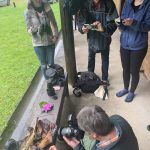
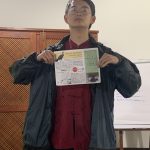
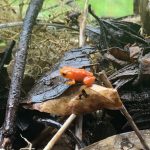


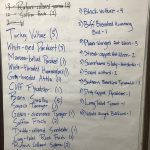
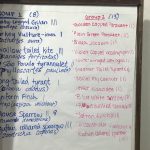
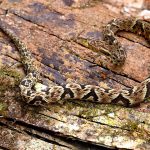

Leave a Reply